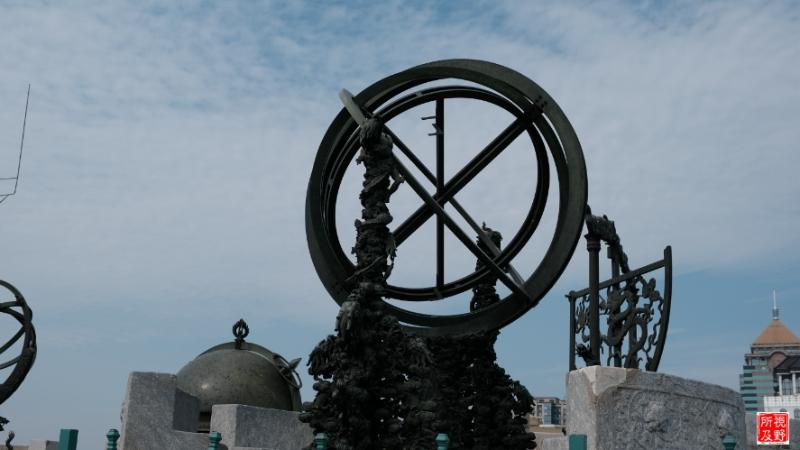Beijing Ancient Observatory: Witness of History and Continuation of Astronomy
1. Introduction
As a treasure in the history of Chinese astronomy, the Beijing Ancient Observatory carries rich historical and cultural significance. In comparison with other related astronomical institutions, its historical accumulation and the continuation of astronomical knowledge make it uniquely charming. This article delves into the historical origins, architectural layout, astronomical instruments, and cultural heritage value of the Beijing Ancient Observatory.

Reference:Beijing Ancient Observatory
2. Basic Information
The basic information of the Beijing Ancient Observatory is as follows:
- - Location: Jianguomen Street, Dongcheng District, Beijing, China
- - Coordinates: 39°54′22″N 116°25′41″E
- - Website Link:https://www.bjp.org.cn/
3. History and Current Status
Established in the Ming Dynasty, the Beijing Ancient Observatory underwent expansion during the Qing Dynasty and significant restructuring by European Jesuit missionaries in 1644. Today, it operates as part of the Beijing Planetarium, showcasing the development of astronomy.
3.1 Historical Background
The historical roots of the Ancient Observatory trace back to the Ming Dynasty, a golden age for Chinese astronomy. Subsequent expansions during the Qing Dynasty transformed it into a more comprehensive astronomical observation station, further advancing astronomical studies.
3.2 Current Situation and Operation
Today, as part of the Beijing Planetarium, the Ancient Observatory has become a popular destination for astronomy enthusiasts and tourists alike. Operating as a museum, it exhibits rich astronomical history and cultural significance, serving as a venue for popularizing astronomical knowledge.
4. Layout of the Observatory
4.1 Architectural Features
Perched atop a brick tower standing at 15 meters high, the Ancient Observatory boasts a spacious platform measuring 40 x 40 meters. This tower, once a part of the Ming Dynasty's city wall, has become one of the iconic structures of the Ancient Observatory.
4.2 Observation Facilities
The Ancient Observatory houses various bronze astronomical instruments, sundials, and other observation facilities, bearing witness to ancient Chinese exploration and development in astronomy.
5. Astronomical Instruments
5.1 Bronze Instruments
Preserved within the Ancient Observatory are many valuable bronze astronomical instruments, representing not only observational tools but also significant examples of ancient Chinese artistic craftsmanship.
5.2 Modern Equipment
In addition to ancient astronomical instruments, the Ancient Observatory is equipped with modern astronomical observation equipment for scientific research and educational purposes.
6. Historical Evolution
6.1 Ming and Qing Periods
During the Ming and Qing periods, the Ancient Observatory played crucial roles, such as providing observational reports to emperors and aiding maritime navigation, attracting scholars, and serving as an important center for astronomical research.
6.2 Historical Figures and the Ancient Observatory
The Ancient Observatory has close associations with historical figures such as Guo Shoujing and Matteo Ricci, who made significant contributions to the development of Chinese astronomy, enriching its historical narrative.
Question 1: What is the Beijing Ancient Observatory, and how does it differ from other astronomical institutions?
Answer: The Beijing Ancient Observatory is a significant historical site in Chinese astronomy, distinguished by its rich historical background and cultural heritage. Unlike other astronomical institutions, it stands out for its deep historical roots dating back to the Ming Dynasty and its pivotal role in the development and continuation of astronomical knowledge in China.
Question 2: What are the basic details of the Beijing Ancient Observatory?
Answer: The Beijing Ancient Observatory is located in the Dongcheng District of Beijing, China, specifically on Jianguomen Street. Its coordinates are 39°54′22″N 116°25′41″E, and visitors can find more information on its website: https://www.bjp.org.cn/
Question 3: How has the Beijing Ancient Observatory evolved over time, and what is its current status?
Answer: Established during the Ming Dynasty, the Beijing Ancient Observatory underwent expansions during the Qing Dynasty and significant restructuring by European Jesuit missionaries in 1644. Today, it operates as part of the Beijing Planetarium, serving as a museum to showcase the development of astronomy and as a venue for popularizing astronomical knowledge.